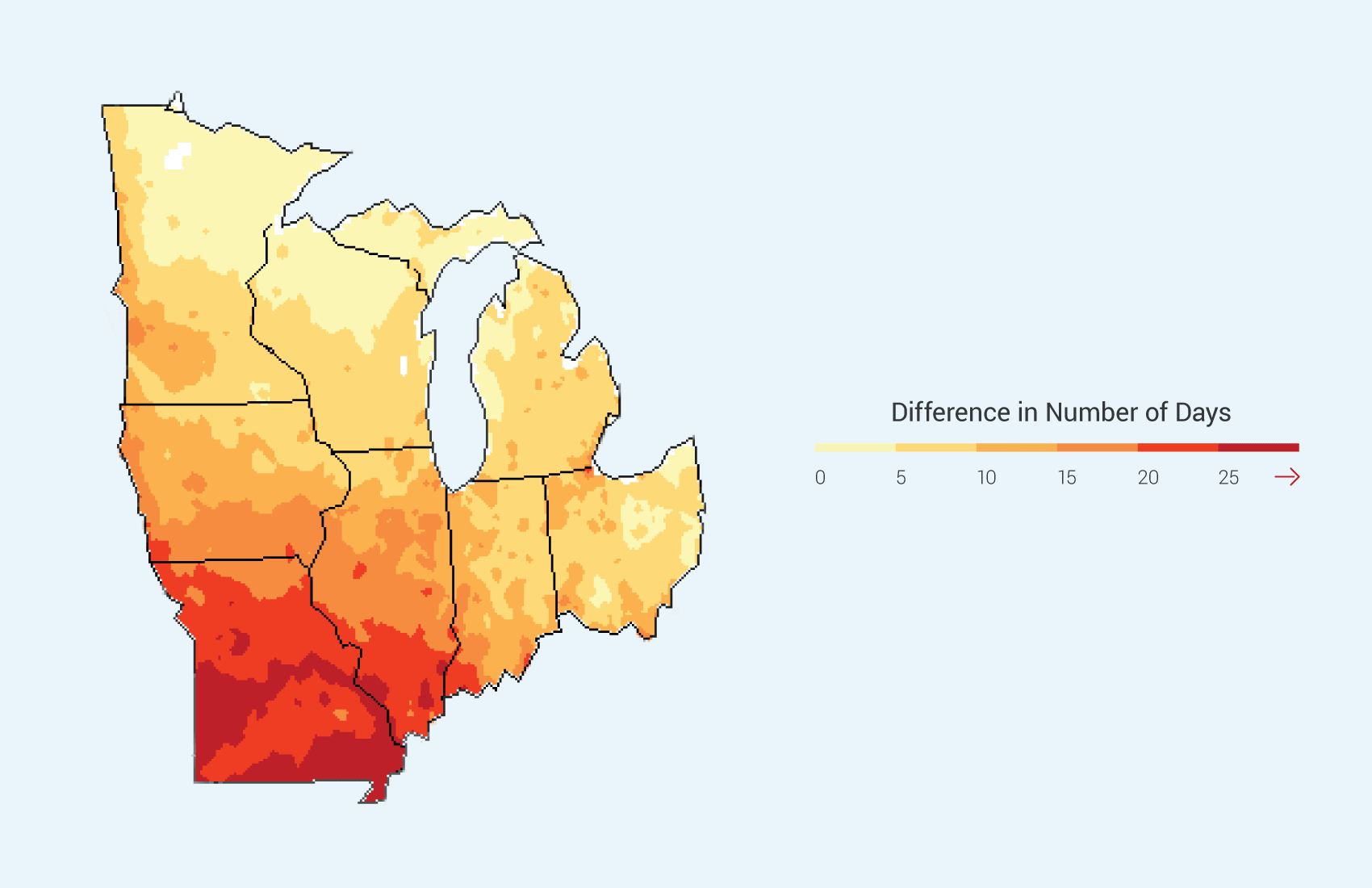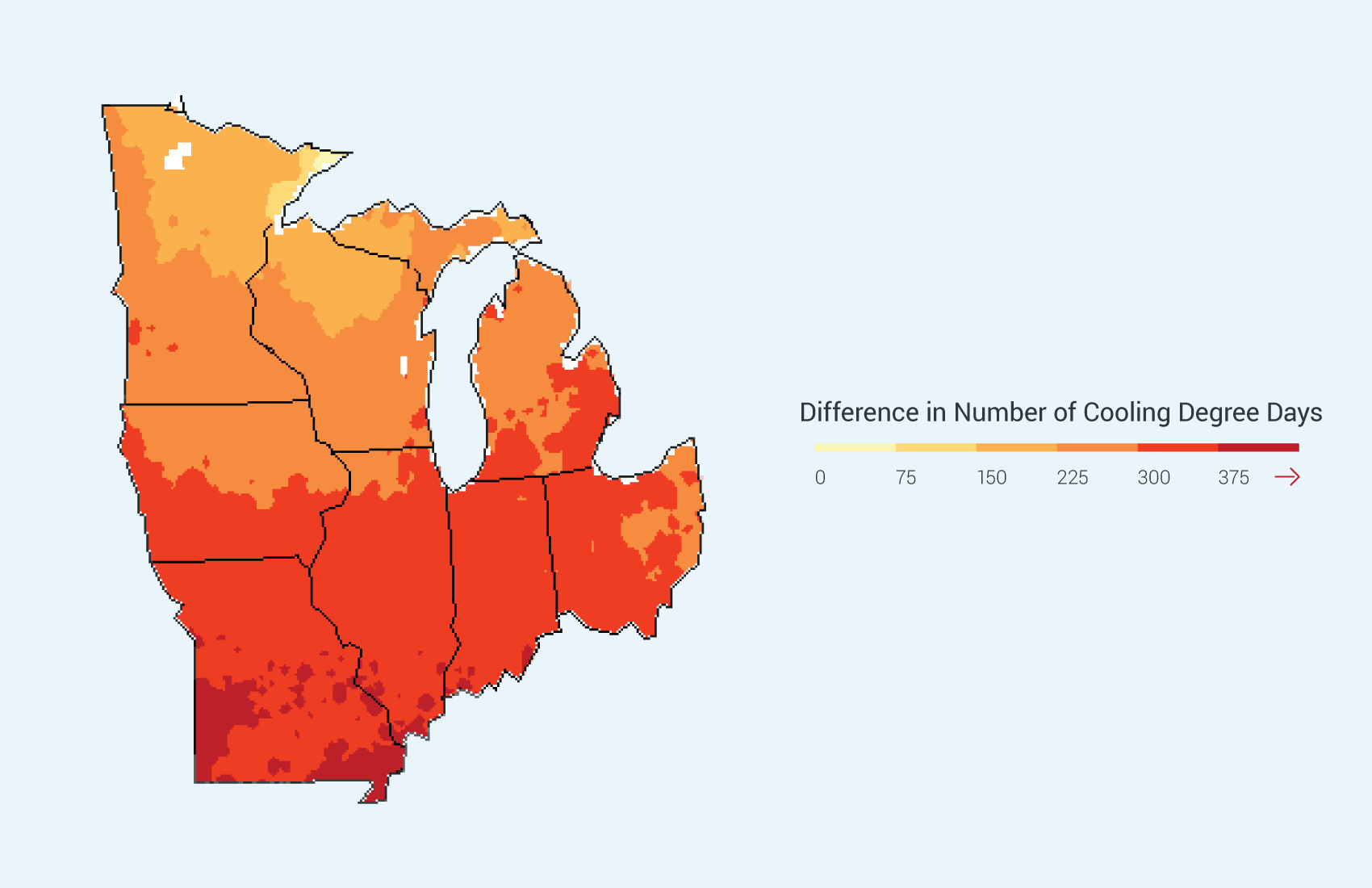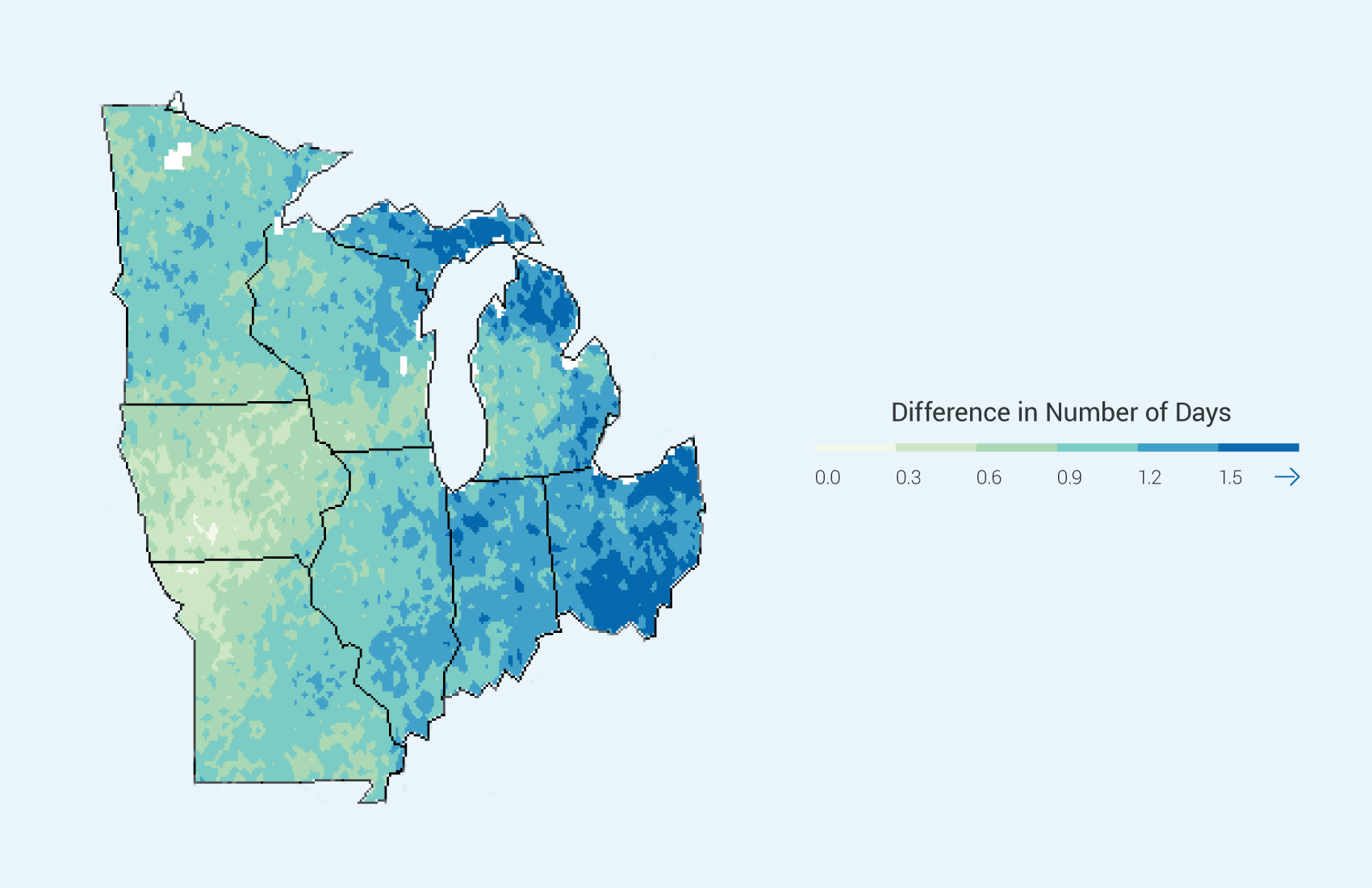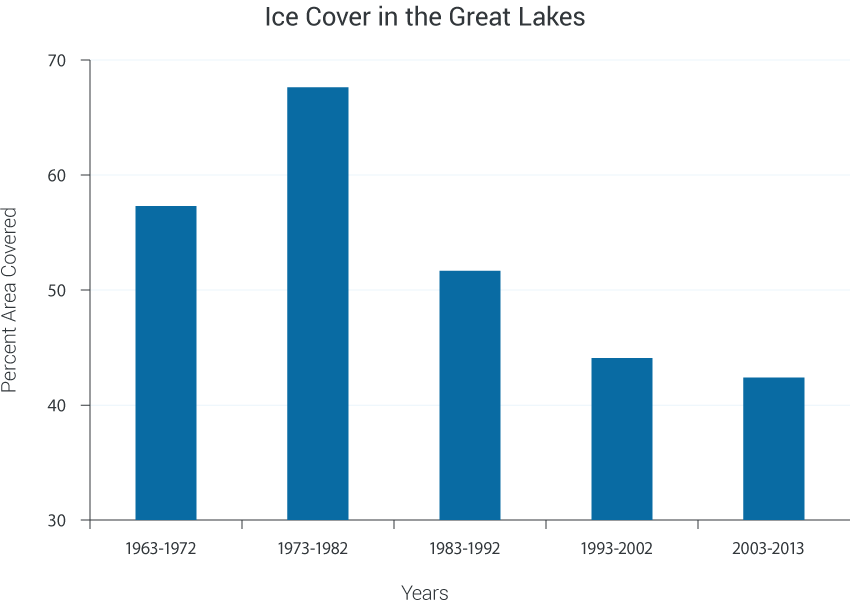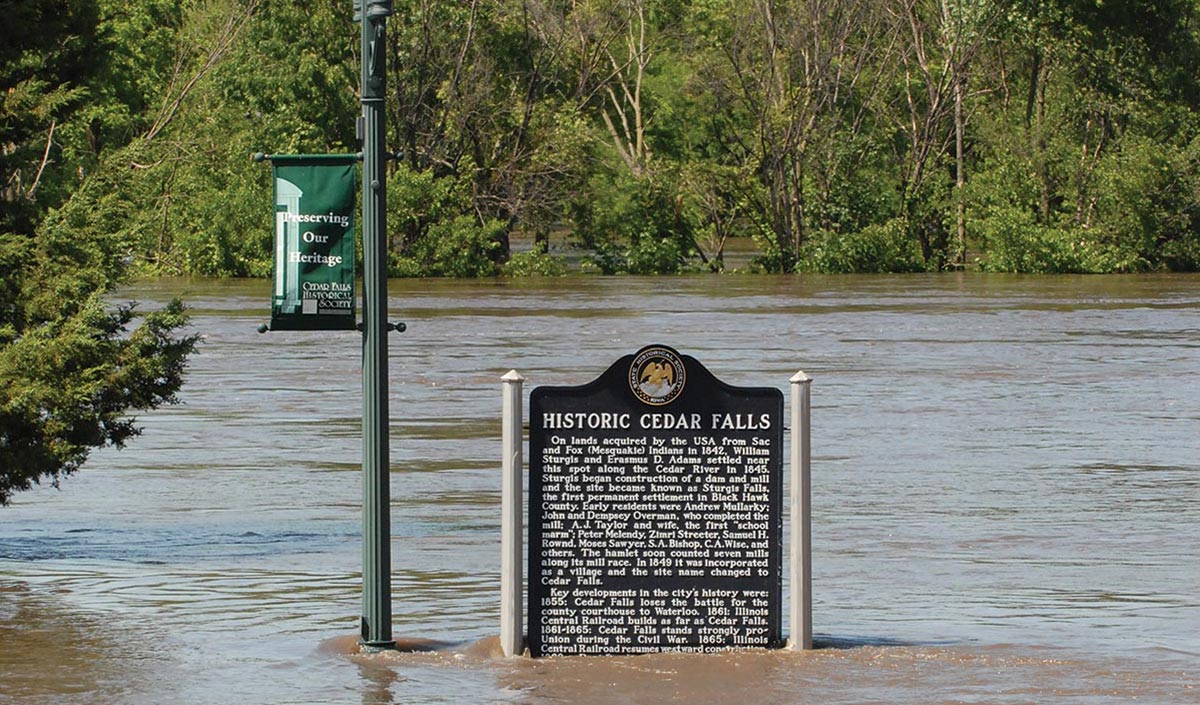Introduction
The Midwest region includes the states of Illinois, Indiana, Iowa, Michigan, Minnesota, Missouri, Ohio, and Wisconsin. The Highlights section below offers a high-level overview of climate change impacts on this region, including the six Key Messages and selected topics. (see Ch. 18: Midwest)













